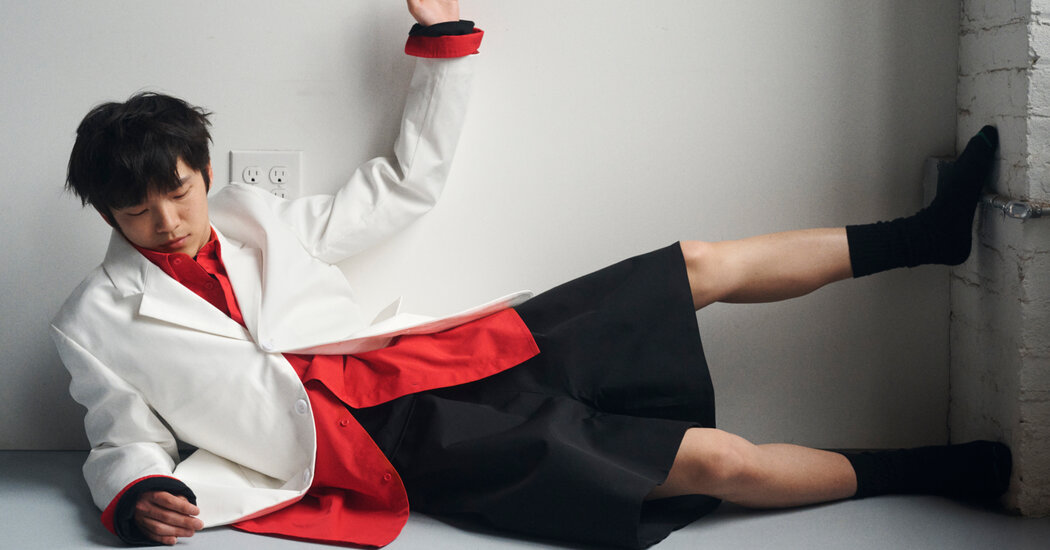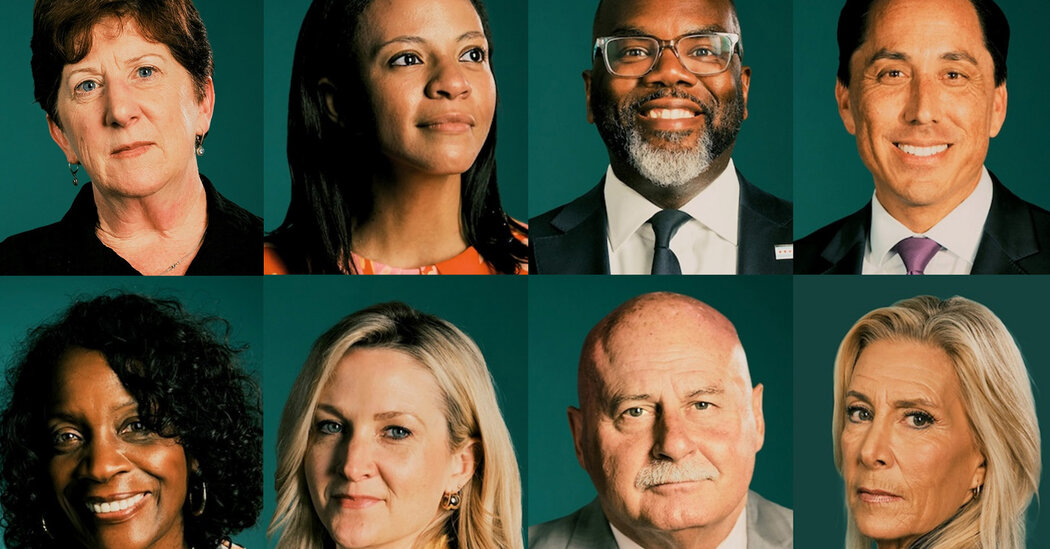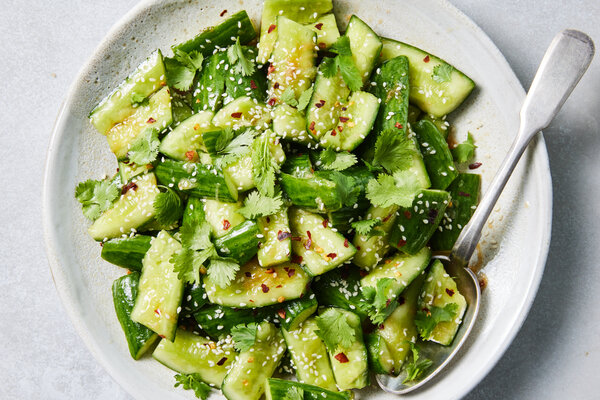On the Verge showcases emerging talent from the worlds of fashion, food, music, art and design.
The fashion designer Zane Li, 24, grew up in the central Chinese city of Chongqing, a sprawling metropolis now home to over 30 million people. Recently, videos of the city’s futuristic transit system, in which trains and monorails pass through the centers of skyscrapers, have circulated widely on social media. When Li was a child, though, the city was neither particularly modern nor especially stylish. Still, his mother, who owned a beauty parlor where he’d spend time after school, always dressed to the nines. “She loved fur, she loved a hard shoulder and she wouldn’t go out without a heel,” Li recalls. At her encouragement, he decided to study fashion.
When Li left for New York in 2019 to pursue a degree at the Fashion Institute of Technology, it was his first time traveling outside of Asia. But he’d long been drawn to American fashion, from classic Calvin Klein sportswear to the sharp tailoring of Helmut Lang, which he’d discovered online and through film. On arrival, he saw that those ’90s dress codes had long since waned — athleisure was everywhere — but his own brand, Lii (the extra “I” reflects his name’s Mandarin pronunciation), which debuted with women’s wear last year, is in part an attempt to tap back into that era of New York style. For his first collection, he reimagined onetime American staples like ringer tees and pencil skirts, altering their silhouettes with creative cuts. The brand was quickly picked up by the online retailer Ssense, and the actress Greta Lee wore a white Lii shift dress with undulating folds to this year’s Independent Spirit Awards.
Now, Li is expanding with his first men’s collection, an assortment of crisp, functional pieces in vivid colors inspired by ’90s sportswear and the video collages of the artist Christian Marclay. Though many silhouettes look familiar at first glance, they contain unexpected details. A seemingly straightforward cotton T-shirt with long sleeves in contrasting colors is slit up the back, allowing its wearer to twist it to the side and use it as a scarf. What appears to be two rumpled T-shirts layered on top of each other is actually a single piece whose folds are sewn in place: Li says he wanted the garment to look like “you’re running errands and it got caught.” A baby blue button-up is offered in cotton, but also in a glossy lightweight polyester.
Li also looked to the 1990s films of the Japanese director and actor Takeshi Kitano for inspiration, particularly to the yakuza-affiliated bad boy characters who wear both business suits and colorful activewear. Zip-up windbreakers come in long and short styles, the former in rosy pink or deep blue and the latter in bright orange, muted gray or sunny yellow. They pair easily with tailored pieces like a full-length double-breasted coat offered in a coniferous green or stark white. But Li’s favorite item in the collection is a single-breasted jacket with a detachable hood that hangs limply from a lone button when not worn. Though he tends to forgo ornamentation in favor of inventive cuts, Li likes the way the extra fabric becomes an accessory. “Of course the hood works, but you can also transition it into something else,” he says. “It’s a utilitarian decorative element.”
Models: Oscar Fishman at Marilyn NYC and Riki. Casting by Leah Stammer. Set design: Castina Bombardo. Hair: Kazu Katahira at Forward Artists. Makeup: Nanase Ito




